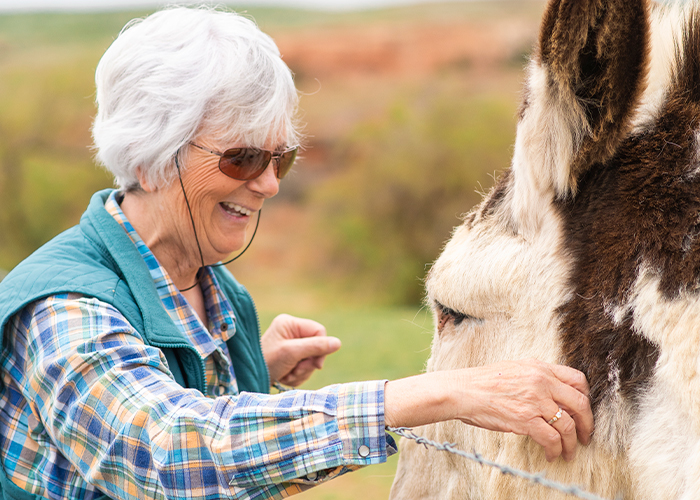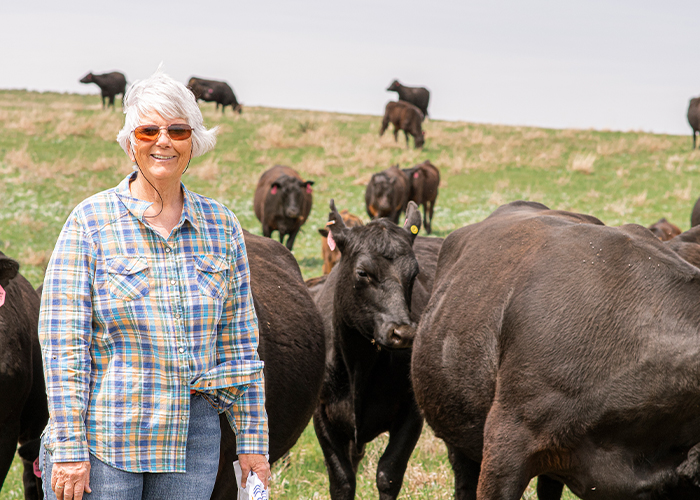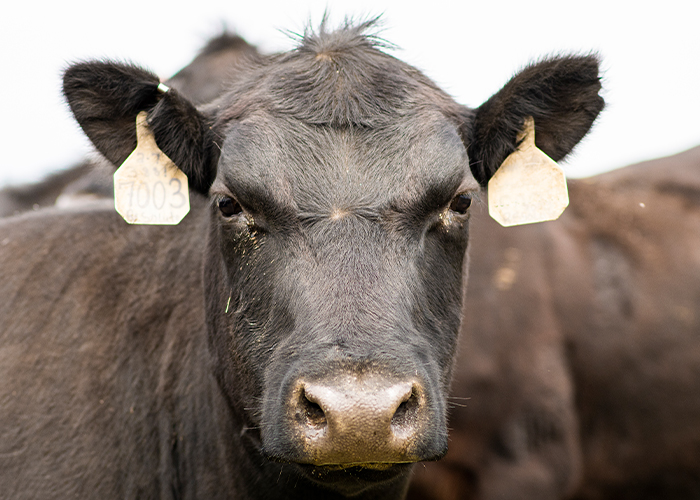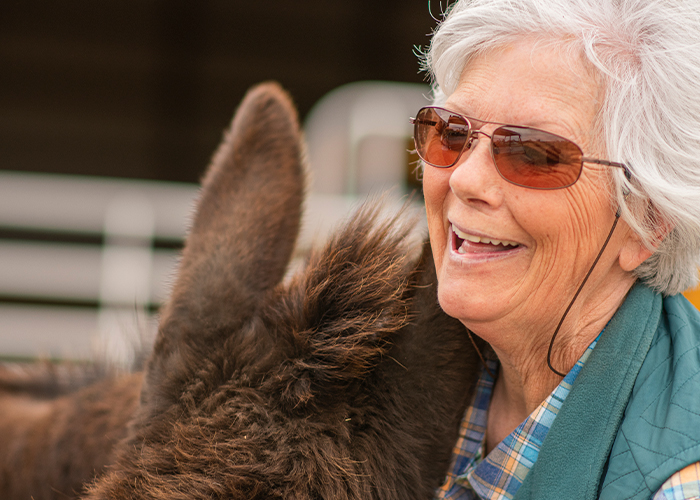This Friday meet Dr. Katie Blunk of Lazy KT Ranch in Alva, Oklahoma, where she runs a herd of Angus cow-calf pairs with her husband, Michael Horntvedt. Prior to taking over the ranch, Katie spent 31 years as a field veterinarian for the USDA Animal and Plant Health Inspection Service in Reno, Nevada. In 2012, with her wild mustangs and burros in tow, she retired and moved back home to the 1,500-acre stretch of land in Woods County that she grew up on.

“Riding horses on Grandpa’s cattle ranch and picking wildflower bouquets were among some of my favorite things,” Katie said.
Commitment to Conservation
Wanting to protect the ranch for years to come, Katie is committed to conservation. It’s something that was passed down to her from her mother, Rose Blunk, who Katie also credits the overall success of her operation. Building on her efforts, Katie has worked with USDA’s Natural Resources Conservation Service (NRCS) over the years to improve and protect the land.
Since 2015, Katie has worked with NRCS to implement the prescribed burning conservation practice through Environmental Quality Incentives Program (EQIP) as part of the monarch butterfly initiative.

The monarch butterfly is one of the most iconic butterflies in North America and is known in part for its annual multi-generational migration from overwintering sites in central Mexico and coastal California to as far north as Canada. Multiple critical population stressors, including the loss and degradation of habitat across the species' range, have led to a significant decrease in the number of monarchs in the U.S. over the past few decades.
NRCS is working with America's farmers, ranchers, and forest managers on voluntary conservation efforts to combat the decline of monarchs on private lands by establishing new habitat and managing existing habitat for monarchs and pollinators.
By clearing the plethora of Eastern Red Cedars that used to call the ranch home, Katie made room for cattle to graze and for monarch butterflies to lay eggs. When cedar trees become overgrown, they make it hard for plants like milkweed to grow. Milkweed is the prominent species for monarchs to lay their eggs during their migration. In addition to monarch butterflies, Katie says that prescribed burns have been imperative to creating a healthy habitat for a number of species on her land.

Preserving through Partnership
Not only has Katie used prescribed burn programs on her own ranch, but the success she achieved with NRCS inspired her to take a position on the local prescribe burn board. She spends her time helping local ranchers create and submit burn plans and shows up to get her hands dirty on every burn.
“Prescribed fire is the best and most economical tool in the battle against the invasive Eastern Red Cedar,” Katie said. “Good fires prevent bad fires.”
The results of prescribed burning have been tremendous. Soil health improves, water quality is better, wildlife and cattle flourish. Happy grazers and butterflies coexist, while the prairies reap the benefits of being good land stewards for generations to come.
Katie's land is abundant with beautiful grass, flowing creeks, and full ponds, thanks to her dedication to preserving and nurturing the land. Her passion for what she does radiates through her smile when she tells her story, and she appreciates the work NRCS does.
“It’s all about partnership,” Katie said. “Neighbors helping neighbors, lending a helping hand to one another to make the world a better place.”

More Information
Visit local farms, ranches, forests, and resource areas through our Fridays on the Farm stories. Meet farmers, producers and landowners who are working to improve their operations with USDA programs.
USDA offers a variety of risk management, disaster assistance, loan, and conservation programs to help producers weather ups and downs in the market and recover from natural disasters as well as invest in improvements to their operations. Learn about additional programs.
For more information about USDA programs and services, contact your local USDA service center.
Savannah West is a student from Oklahoma State University. For more information about this story, contact Gilbert Guerrero with NRCS in Oklahoma.


